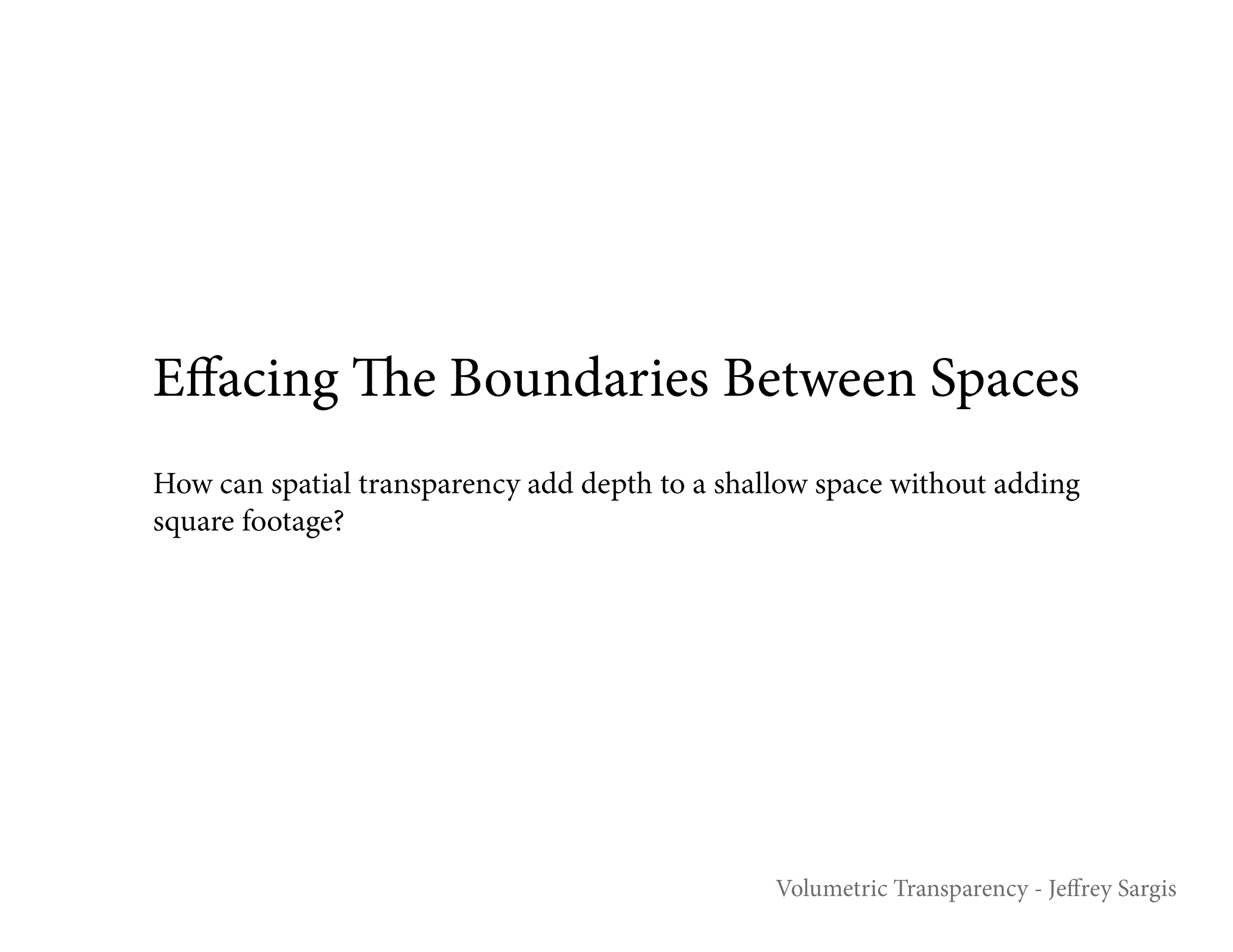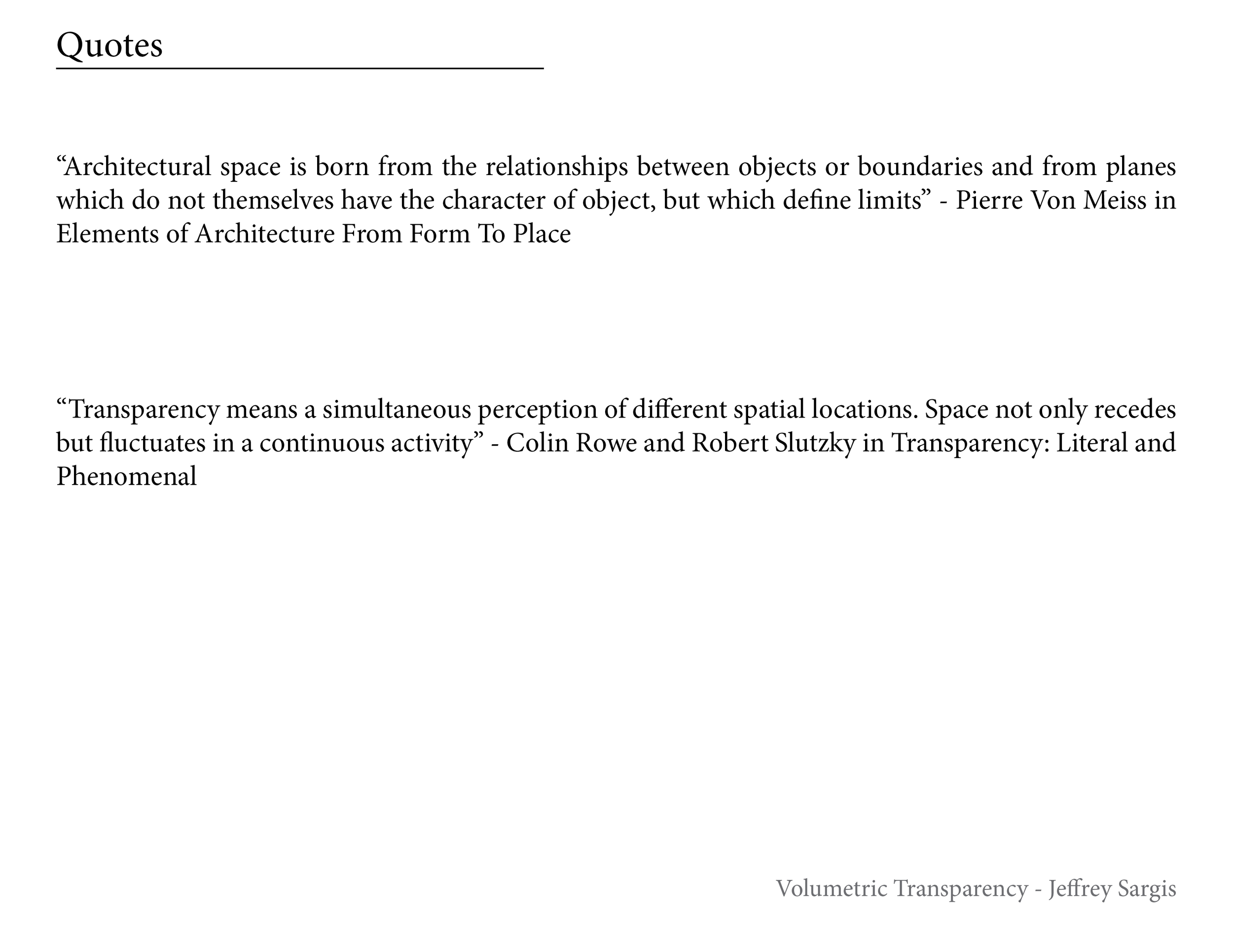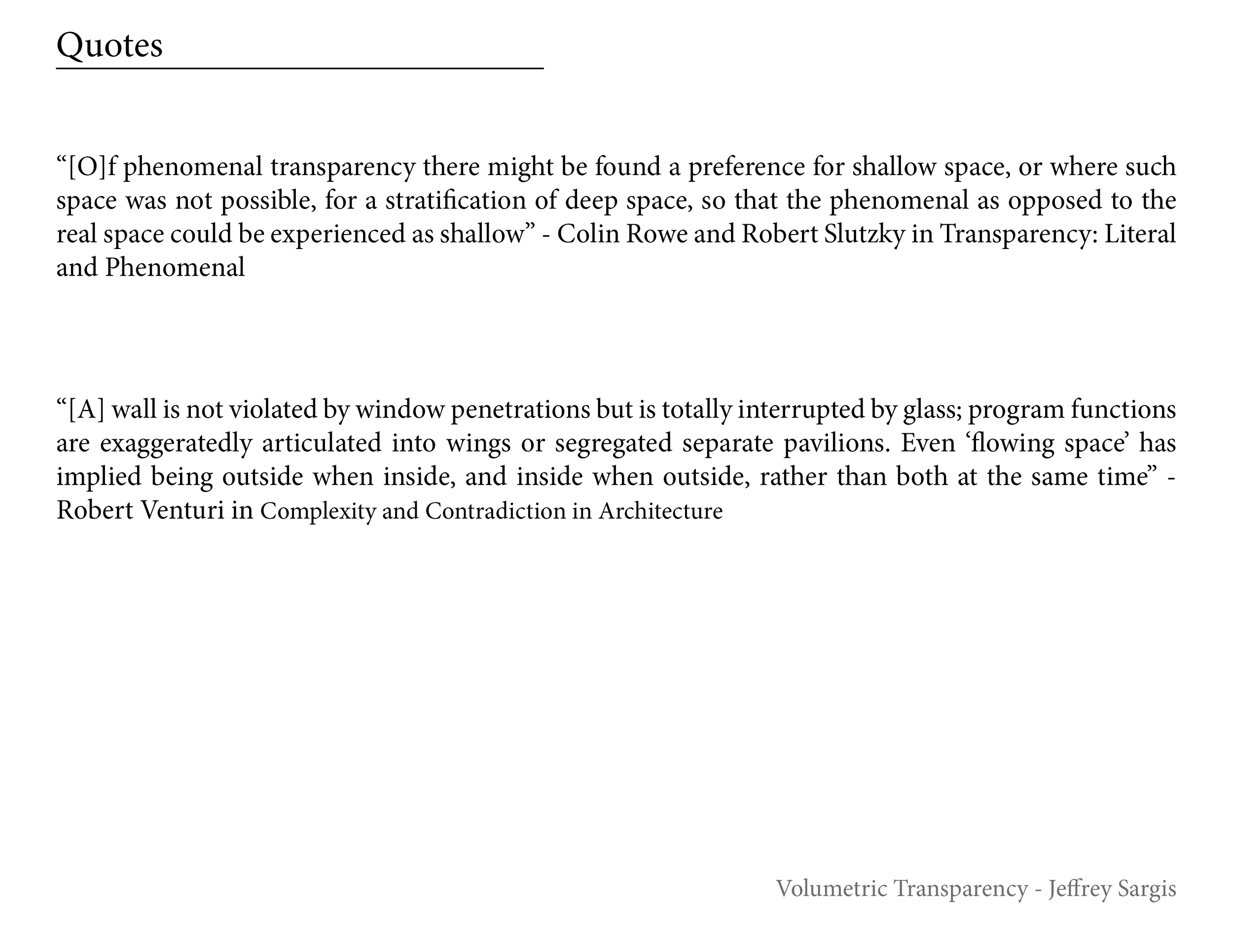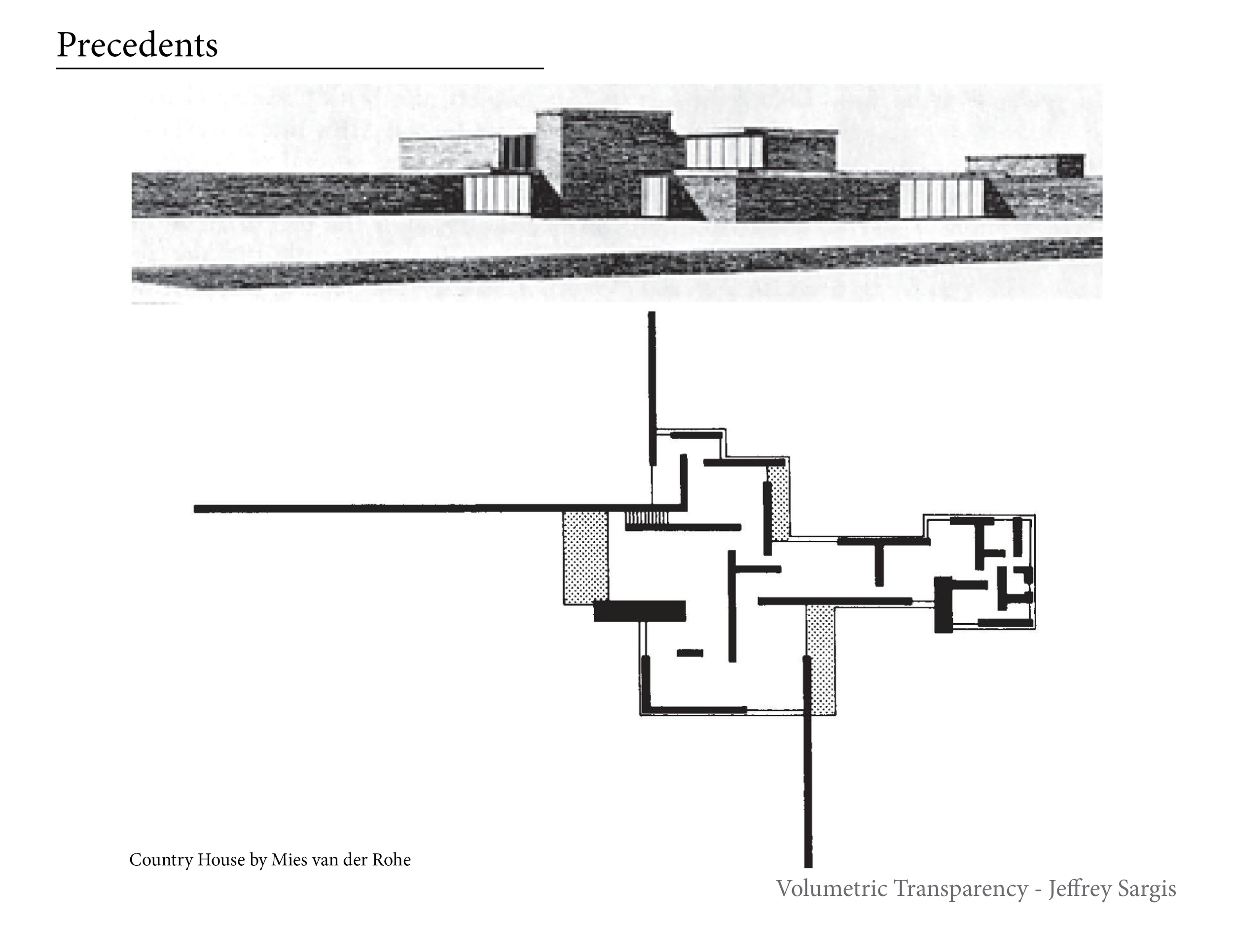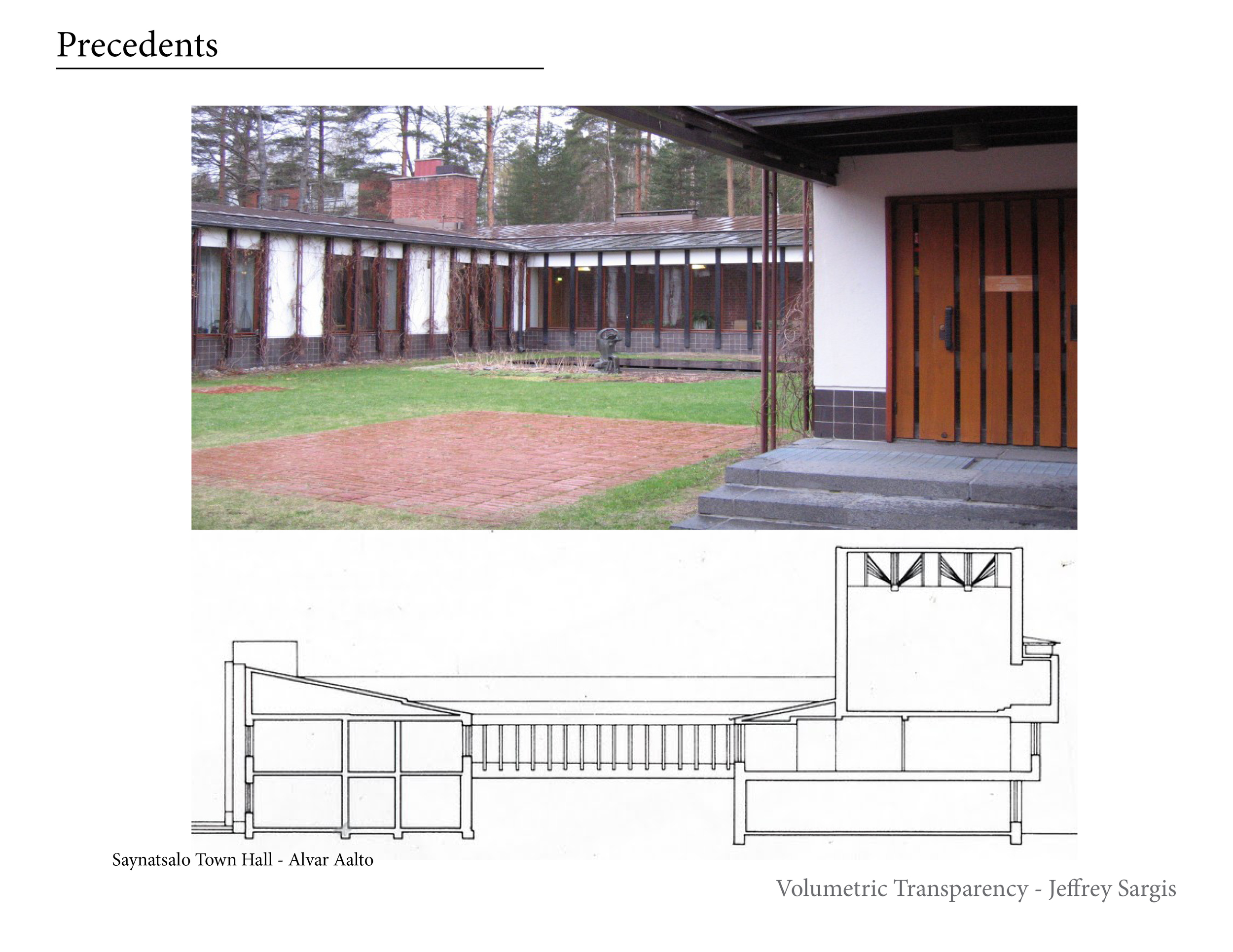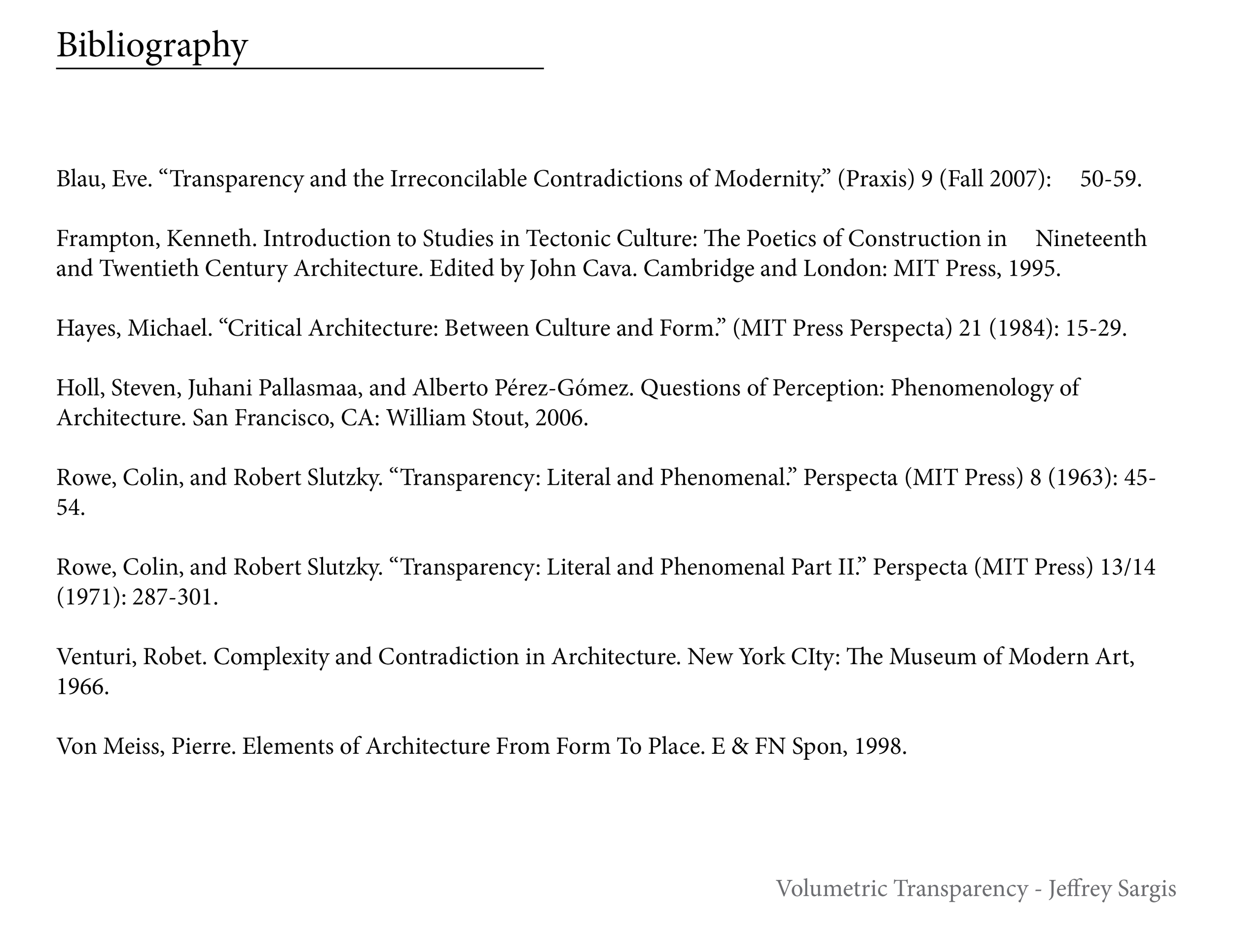Intro Statement:
Visually, spaces are perceived with transparency when they have overlays, extensions and their boundaries blur at certain points. These observations are found throughout various works and they concentrate on visual perceptions of space. One of these concepts illustrated by Eve Blau includes abstracted spaces that create an image similar to cubist paintings where the user is constantly viewing spaces that intertwine and relate. The relationships are formed from the basic roots in tectonic style that controls how one sees a room such as heavy or light, shallow or deep. These different methods of overlaying and showing ambiguity abstractly within spaces merges and shifts programs to alter our ideas on how these spaces are associated. These perceptions not only include overlays but a sense of the beyond and the shortening and the extending of a space. Ambiguities within spaces that make associations between two or more areas are referenced to explain the phenomenal perceptions of a larger layout. The occupant’s assessments and perceptions about a space is directly associated with spatial relations, ambiguities, tectonics, and perceived barriers. These aspects all inform and contribute to the ideas behind the perception of phenomenology.